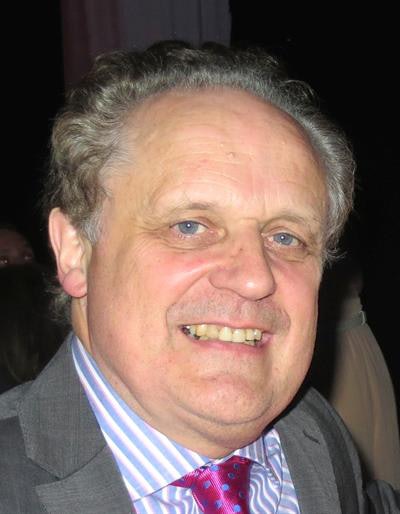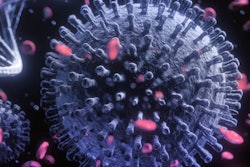
Experts from around Europe are urging the European Union (EU) to implement lung cancer screening using low-dose CT within the next 18 months. The EU position statement, published in the December issue of Lancet Oncology, recommends a risk stratification approach, among other guidelines.
 Dr. John K. Field, PhD.
Dr. John K. Field, PhD.The statement comes from lung cancer experts in eight European countries, most of whom also belong to the EU Lung cancer CT Screening Implementation Group (EU-LSIG). After scouring the literature and much discussion, the researchers declared lung cancer screening is a must and countries should start planning for it now (Lancet Oncology, December 2017, Vol. 18:12, pp. e754-e766).
"Quite simply, lung cancer screening saves lives. There is now a consensus opinion across Europe that we should start to plan for the implementation of lung cancer CT screening immediately," said co-author Dr. John K. Field, PhD, a clinical professor of molecular oncology at the University of Liverpool in the U.K.
Enough is enough
Historically, Europeans have been more cautious on implementing lung cancer screening programs, with many awaiting data from the Dutch-Belgium Randomized Lung Cancer Screening (NELSON) trial. The EU position paper states enough evidence exists already in defense of lung cancer screening, and, furthermore, countries should start preparing now.
 Dr. Matthijs Oudkerk.
Dr. Matthijs Oudkerk.Field, along with Dr. Matthijs Oudkerk at the University of Groningen in the Netherlands, and 20 clinical specialists in lung cancer screening from Austria, Denmark, Germany, Italy, Spain, Netherlands, Poland, and the U.K. actively engaged in the planning and execution of randomized controlled screening trials in Europe, were involved in the clinical management of patients with lung cancer and lung nodules, and have developed relevant clinical practice guidelines on smoking cessation, recruitment of high-risk participants, and CT screening protocols. They represent all the specialties and professions involved in lung cancer screening programs in Europe.
"Since the publication of the NLST [National Lung Screening Trial] results in 2011, an EU position statement on the value of CT screening for lung cancer is now a crucial necessity," they wrote.
Their position statement focuses on lung cancer screening with low-dose CT (LDCT) and the early detection of lung nodules before clinical workup, and it does not address the entirety of workup and treatment choices.
Their nine recommendations are as follows:
- Plan for the implementation of lung cancer screening in Europe while waiting for NELSON trial data on mortality and cost-effectiveness, as well as data from the six smaller European studies for developing implementation strategies in each of their own countries.
- Future lung cancer low-dose CT programs should use a validated risk-stratification approach so that only individuals deemed to be at high enough risk are screened. In the near future, incorporation of potential biomarkers and susceptibility genes into lung cancer risk models should be considered to improve the accuracy of risk-stratification models.
- All future screening participants entering into early detection programs for lung cancer should be provided with carefully constructed information on the potential benefits and harms of screening to enable them to make an informed decision as to whether they wish to participate or not. Smoking cessation advice should be offered to all active smokers.
- Future management of screen-detected solid nodules should use semiautomatically derived volume measurements and volume-doubling time, as well as be quality-assured.
- National quality assurance boards should be set up by professional bodies to ensure adherence to all minimum technical standards, including semiautomated volumetry, and to standardize diagnostic criteria for screen-detected lung nodules, including radiation exposure limits.
- Management of prevalent lung nodules in CT screening programs, lung nodules at incident screening (newly detected), and CT-detected lung nodules in clinical practice should be managed with different protocols because of different pretest lung cancer probabilities.
- Although only evidence for annual low-dose CT lung cancer screening is available, recent research suggests the possibility of using a more personalized approach to lung cancer screening with a risk-based approach on the results of baseline and first screening rounds.
- Management of lung nodules by lung cancer multidisciplinary teams should be done according to the EU position statement recommendations with the aim of minimizing harm and ensuring patients receive the most appropriate treatment.
- The EU position statement expert group recommends the planning for low-dose CT screening should be started throughout Europe because low-dose CT lung cancer screening has the potential to save lives.
"Some specific areas still require further development and consideration, such as the integration of smoking cessation into lung cancer screening programs and the selection of the appropriate target screening population," the authors wrote. "However, evidence clearly shows that Europe must start planning for implementation within the next 18 months. During this planning period, each country will need to focus on deciding the best risk-prediction method for the identification and recruitment of high-risk populations, and on setting up the required infrastructure for quality-controlled CT scans that use volumetric analysis."
The authors chose 18 months as the time frame because they think it will take that long to implement a lung cancer screening program.
Time is of the essence
The expert group also had specific recommendations regarding the timing of setting up lung cancer screening. They suggested the following:
- Publish recommendations for implementation with quality assurance measures (six months).
- Plan health service requirements and their delivery (12 months).
- Plan phased implementation in high-risk regions while awaiting mortality data from the NELSON trial (18 months).
- Plan to set up a European registry of images and data (18 months).
- Evaluate implementation after the first 12 months and review delivery strategy (36 months).
- Expand lung cancer screening to all regions within Europe (48 months).
The EU position statement is considered by the EU lung cancer screening community an important planning document on how to implement lung cancer screening in Europe, and it will be discussed with the health policymakers throughout the EU, according to Field.
"We are on the verge of implementing lung cancer screening, and currently none of the countries in Europe have thought through how," he and his colleagues told AuntMinnieEurope.com.
Will it happen?
U.K. lung cancer expert Dr. Nicholas Screaton, a consultant radiologist at Papworth Hospital National Health Service (NHS) Foundation Trust in Cambridge and a senior editor of the British Journal of Radiology, applauds the position statement and agrees lung cancer screening requires detailed preparation. However, will it happen?
"Ultimately, decisions on implementation of lung cancer screening programs will be down to our national governments," he said. "This brings potential competing political priorities and funding commitments into play at a time of austerity in many nations. Whilst planning for lung cancer screening implementation should run in tandem with the accrual of the NELSON outcome data, in my view, until this is provided, some key European decision-makers holding the relevant purse strings will continue to procrastinate. ... I applaud the authors for their 'call for action' statements and hope the relevant policymakers take notice. My confidence that the timeline outlined is achieved is, however, limited."



















